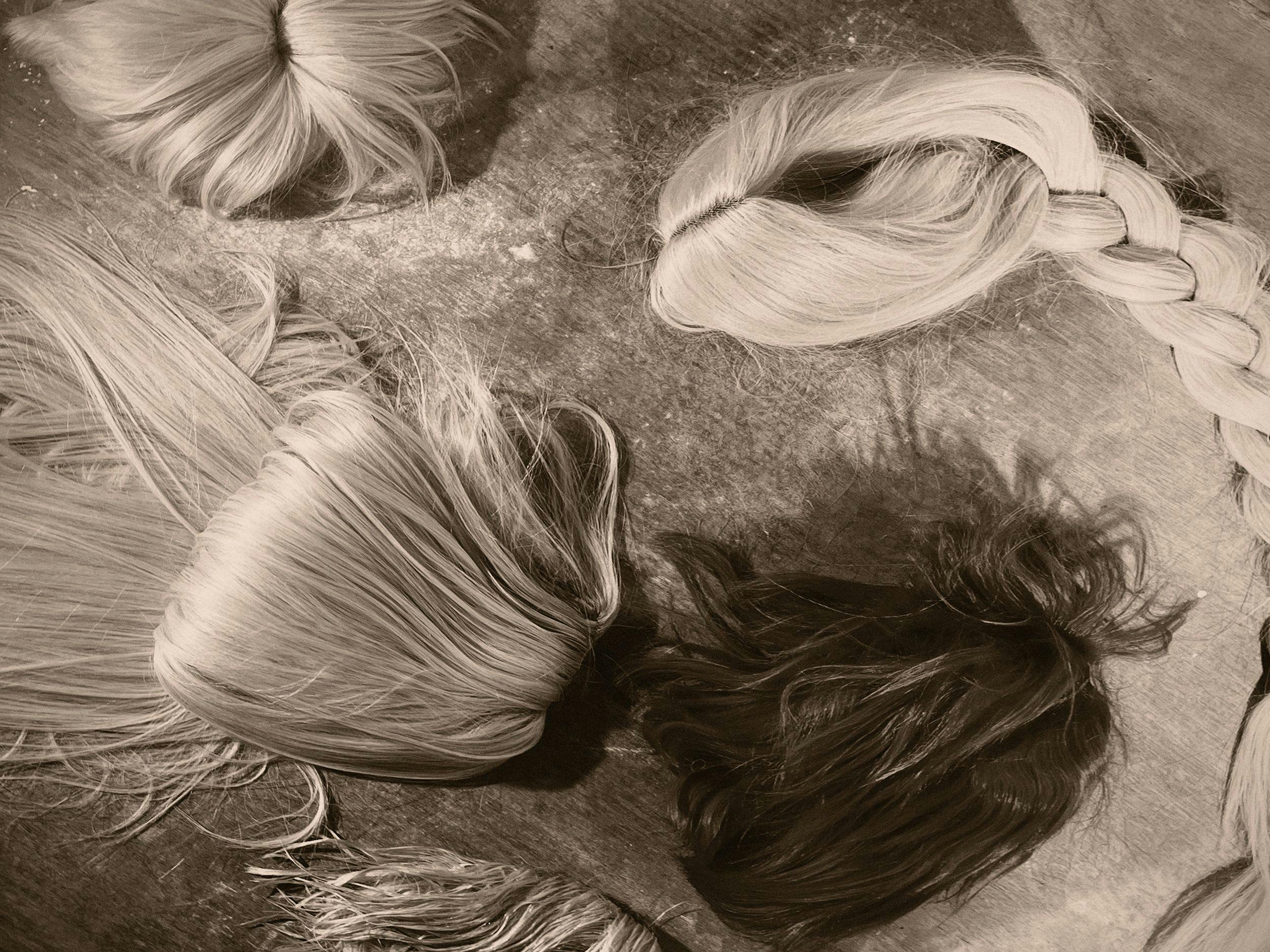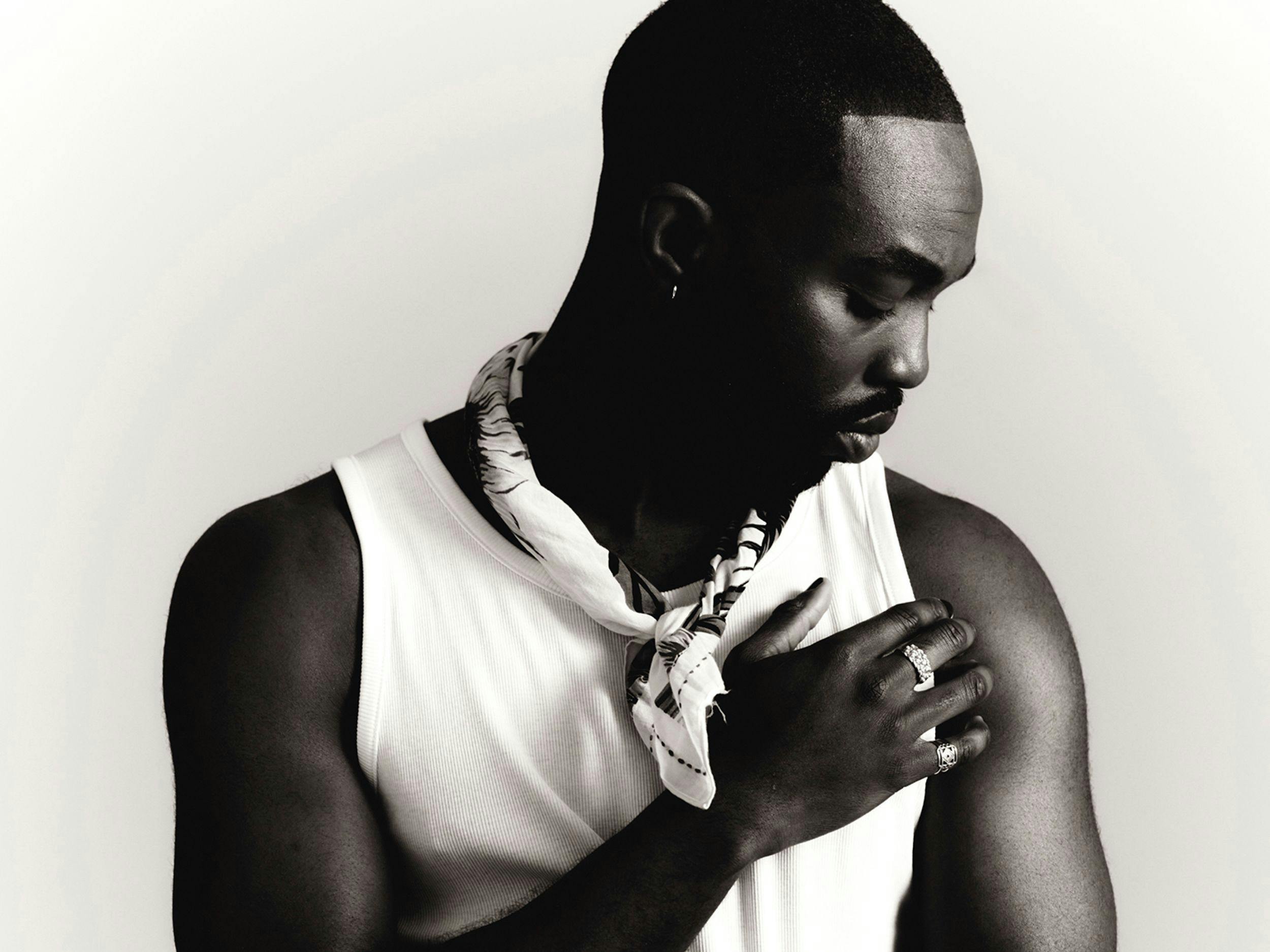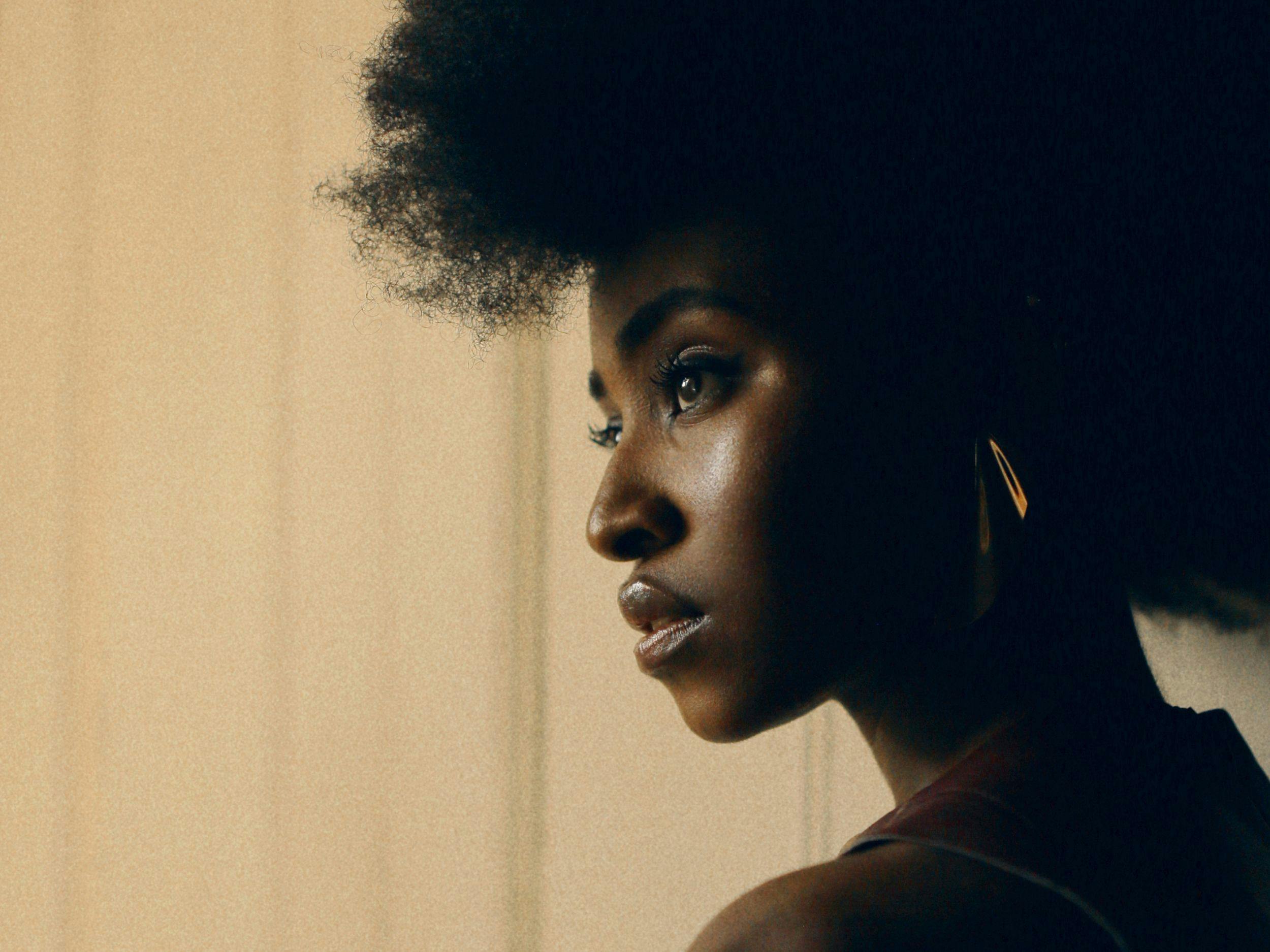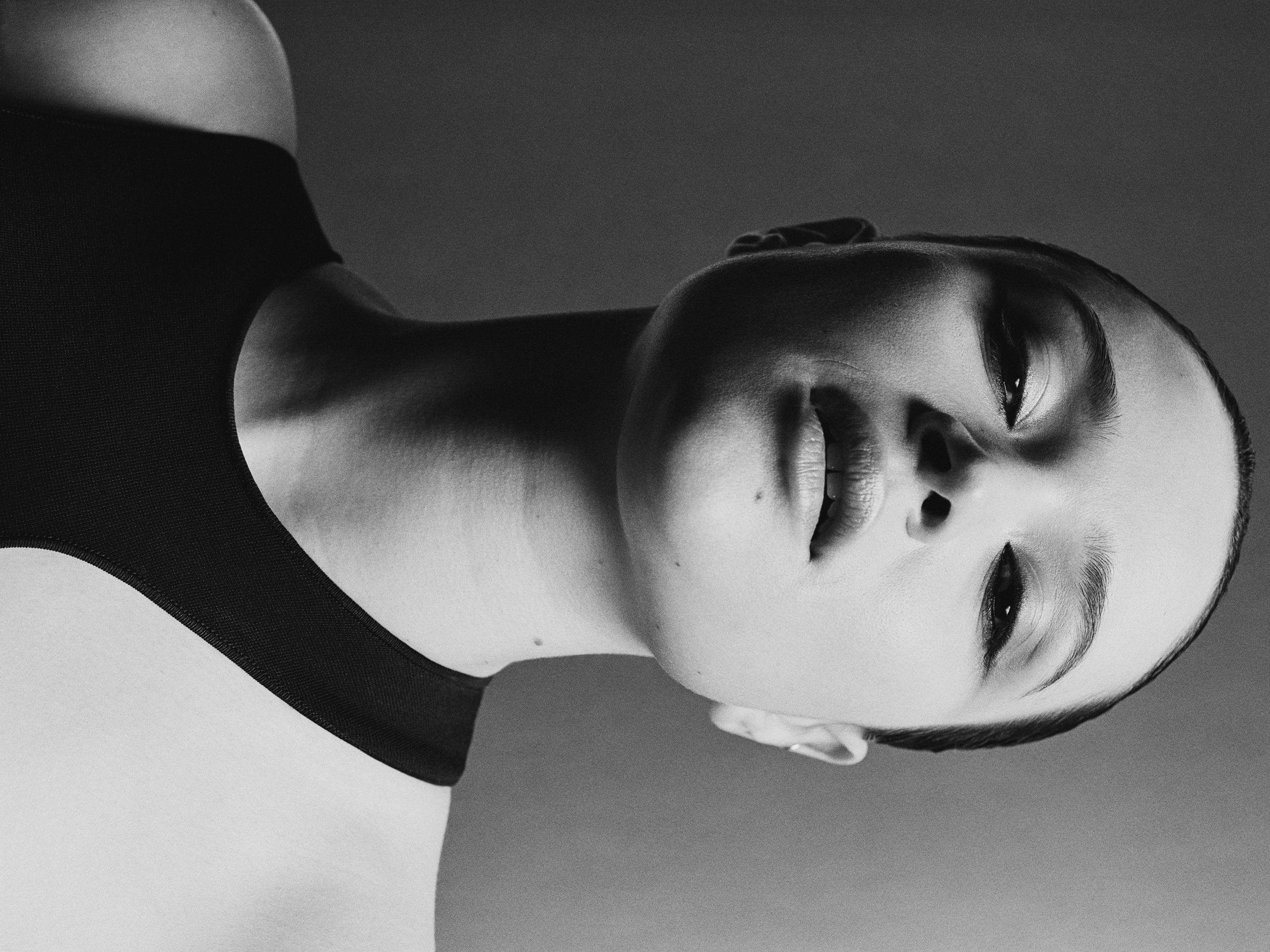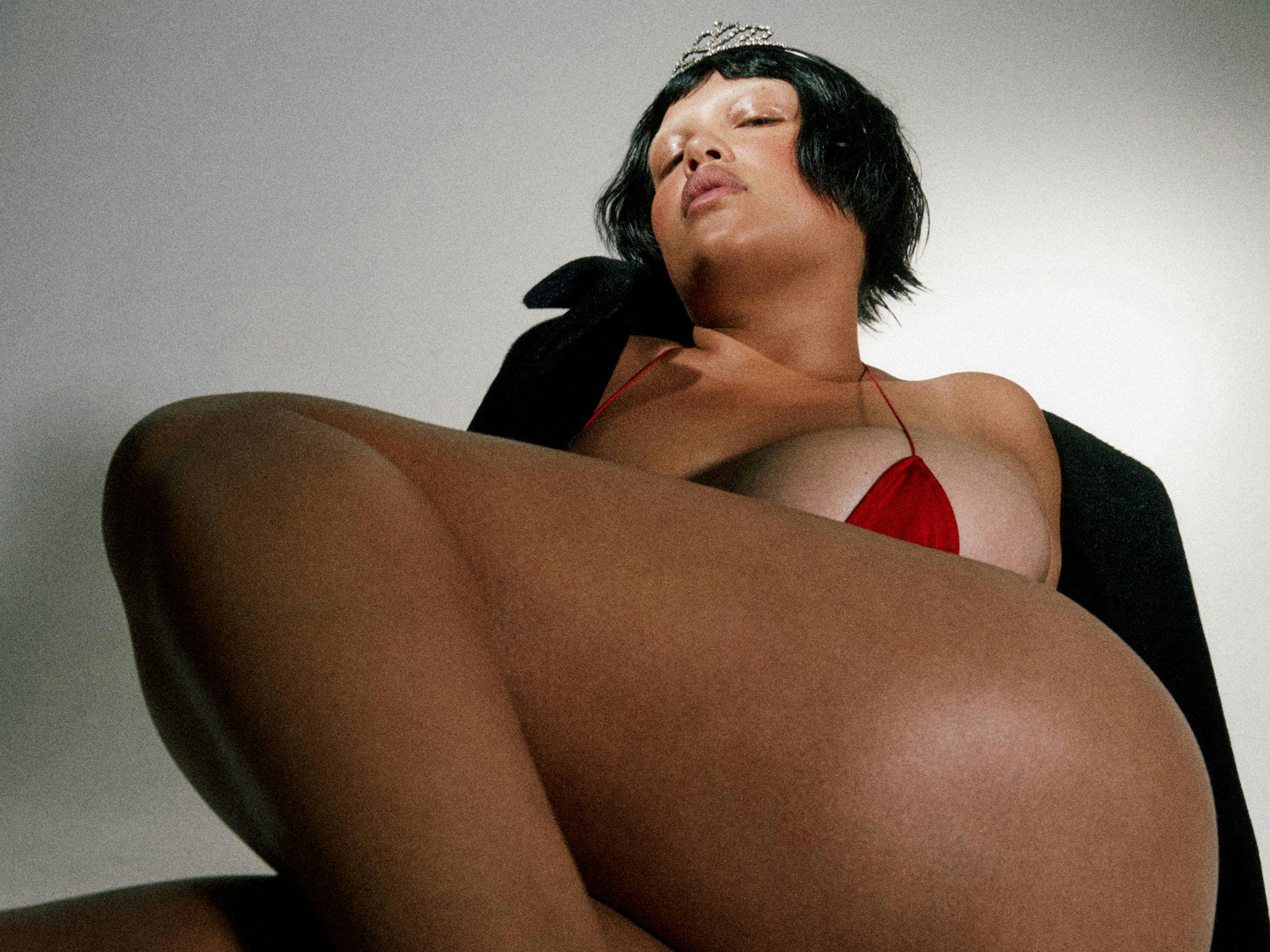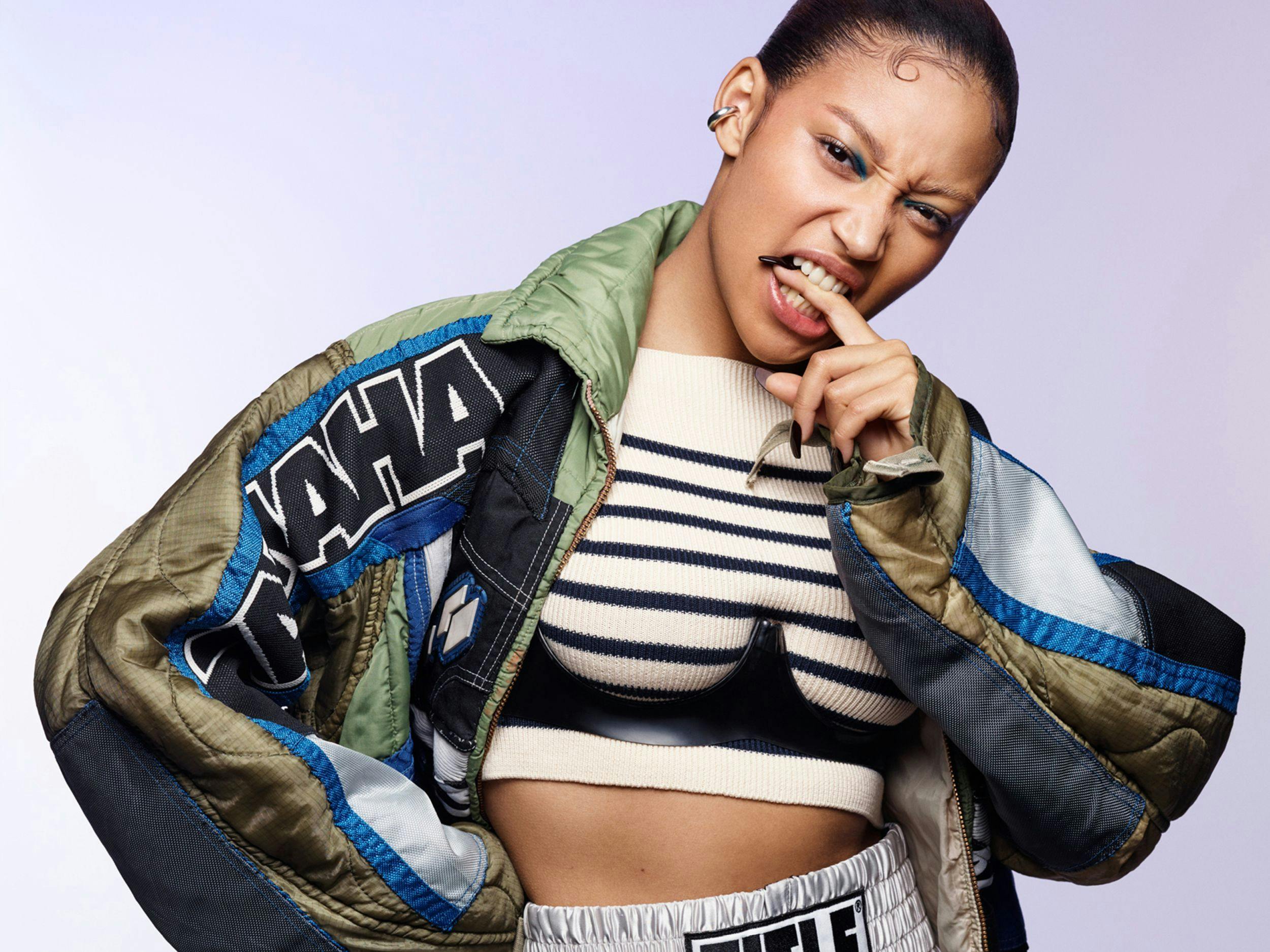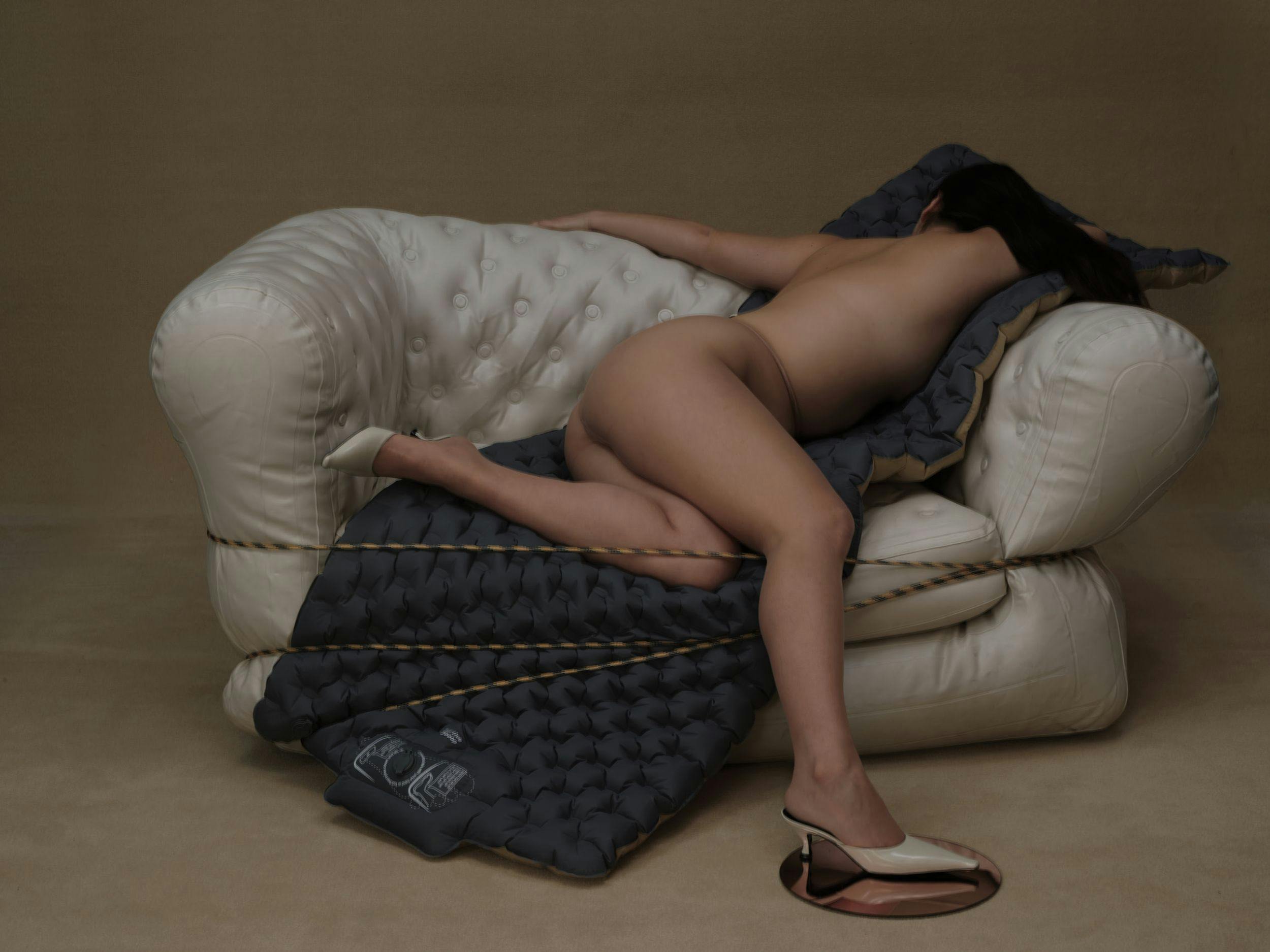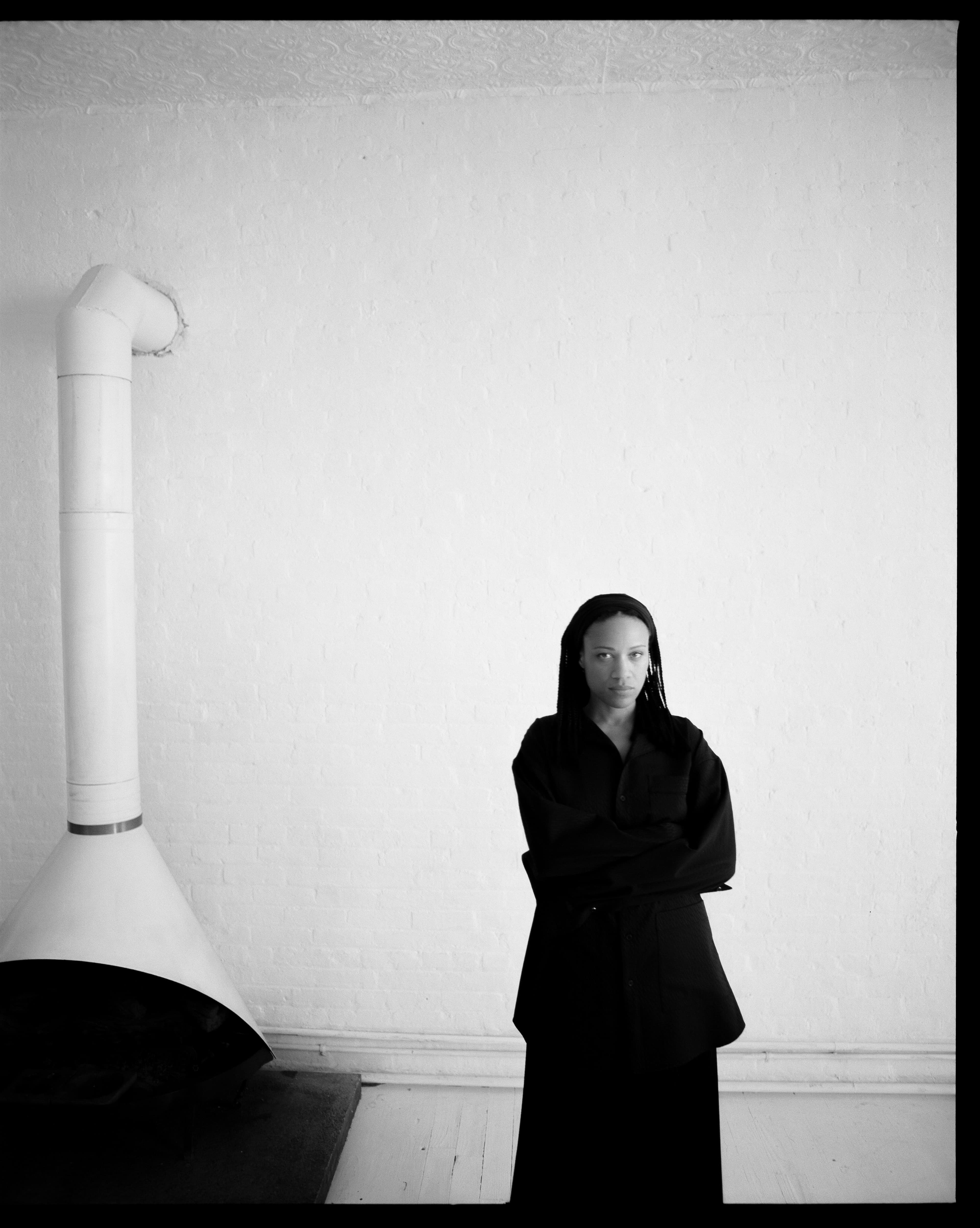
All CLOTHING by Helmut Lang
A New Perspective From Ashley James
The Caribbean island of Jamaica has a population of just over two million people, but a reputation that is renowned worldwide—albeit largely through the clichés of Rastafarians and rum, bobsledders and Usain Bolt, Sean Paul and Bob Marley. A tropical country that many visitors experience largely as a beach destination, the nation has a vibrant, complicated, and fascinating history and culture that often cannot be seen from the enclosures of a seaside resort. For Dr. Ashley James, the associate curator of contemporary art at the Guggenheim Museum and the guest curator of the current Kingston Biennial, Jamaica’s international fame is both a responsibility to honor and an opportunity for enlightenment. “I approached it in the way that I like to do with any exhibition, which is, what is the hook, what are the broadest concepts that everyone can latch on to? From there, the specificity spirals out and, depending on what your interest and background is, you might attach to different aspects of the exhibition,” she explains. “This idea of the tourist economy and land, that’s something that is going to be very acutely felt for the local public. Then obviously, that’s a global understanding of the Caribbean too. It’s a topic that might implicate you if you’ve been to Jamaica and you’ve only gone to the resorts—and that’s a great thing.”
For this latest edition of the Kingston Biennial, which opened at the city’s National Gallery of Jamaica in December and will be on view through the end of June, James chose the theme of “Green X Gold,” a reference to the unique color palette and geometric design of the country’s flag. Featuring dozens of images by almost thirty artists, the exhibition, with an emphasis on landscapes, is a celebration of Jamaica’s natural abundance and an investigation of the complicated consequences of that bounty through the centuries. “The yellow, black, and green [of the flag] spoke to the fact that already embedded within this self-understanding of a national identity is land, sunshine,” she explains. “That is the subject of the exhibition, and then the X being this really fertile symbol for the partitioning of land, multiplication, all of the meanings that it could possibly have. I love the fact that that already exists in this symbol of the country, self-produced.”

All CLOTHING by 3.1 Phillip Lim. SHOES, James’s own.
James was born in New York to Jamaican immigrants and recalls spending many summers on the island with her siblings as a child, but she says that her curatorial role has offered her an opportunity to view her family’s homeland from a new perspective. “I knew Jamaica from this familial sense. I’m still in the process of learning about Jamaica with a sense of curiosity that’s, yes, about contemporary art, but I definitely think that I’m much more curious these days about the arts and the art profession in general,” she says. “I’m really impressed and galvanized by the people who work at the gallery and, what does it mean to make an art life as young people in a place with a very different context, resources, relationship to the art world? I think that this is definitely the beginning of deepening that understanding.”

All CLOTHING by 3.1 Phillip Lim
Despite its proximity to the United States, the Caribbean has long been on the periphery of the globalized art scene, and James sees this biennial as an opportunity to bring the region into the larger conversation. Unlike some previous editions, the only requirement for inclusion this year is Caribbean descent, meaning that while Jamaican artists working in Jamaica make up roughly a third of the participants, many come from other nations or are part of the global diaspora. “Something that I believe in theoretically—but it’s always nice to empirically see—is, you can never make assumptions about what a place is like, who are the people who are working there,” she says. “Someone needs to write a history of Caribbean institutions, because there’s just so much there. The show in part is speaking back to that. There are artists and works that have been either in the collection or seen in past exhibitions and that was intentional for me, because it was like, here’s an opportunity to nod towards the innovation that has been happening and see these artists in a different context.”
In the centuries since Christopher Columbus first landed on a Caribbean island in 1492, the region has been taken advantage of, first by Europeans and then Americans, from the sugar plantations that earned huge profits through the use of slave labor to today’s lopsided tourism-focused economies. While James recognizes that the Biennial offers an unparalleled opportunity to spotlight and uplift the area’s artists, she is not afraid to surface this harsh legacy at the same time. “Krista Thompson wrote a very consequential book called An Eye For The Tropics. What I think most people, if you’re a critical thinker at all, intuitively know about the Caribbean is this place as a paradise that is open for the leisure of the Global North. She basically argues that that was constructed in the late nineteenth century through this painstaking literal pictorial construction of the landscape as a different kind of open frontier,” she elaborates. “That was the jumping-off point for the show. There are a lot of artists that I already knew, Caribbean artists who are really interested in critiquing the idea of paradise and how the Caribbean becomes this construct for external people and, what does it mean to be a Caribbean subject who is working in the aftermath of colonialism and the tourist economies that supplanted it?”

DRESS by Zero + Maria Cornejo. SHOES by Miu Miu.
As the daughter of immigrants, James says that her family was far removed from the art world when she was growing up. Even after taking AP Art History in high school, she chose to pursue American studies and English as an undergrad at Columbia, unsure of the potential of an art history degree. “I’d always liked reading, I liked the humanities, so literature was a natural space,” she recalls. “I thought I might be a journalist, then I thought that I wanted to be an English professor focusing on poetry.” She went on to Yale to earn a Ph.D. in African American studies and English literature while curating her first exhibition at the school’s gallery, and that wide-ranging background is still resonant in her work today as the first-ever full-time Black curator at the Guggenheim, particularly in her standout 2023 show “Going Dark: The Contemporary Figure at the Edge of Visibility,” which filled the Fifth Avenue rotunda with over two dozen artists of color who explored identity, representation, and the construction of the self in their works. “I think that sense of responsibility comes out more when it comes time to think about the politics of exhibition and collecting. My job is to present and preserve art,” she says when asked how she views her groundbreaking role. “The responsibility is, I need to make sure that I do right by these artists, have their work look good, put on a show that’s thoughtful, be thoughtful about who’s included. I always want to do something that’s moving the conversation forward, and so that is where I feel pressure.”

All CLOTHING by Ferragamo. SHOES, James’s own. EARRINGS by YSSO.
With museums still struggling to bring back audiences after pandemic closures and a shift toward more immersive experiences, James says she continues to have faith in the power of strong ideas and a clear vision. “All one can continue to do is make shows that people want to see, not assuming that an audience won’t be invested in a certain topic. It’s always exciting to me when I hear feedback from different kinds of people about what they found relevant and it’s never as predictable as marketing wants you to think it is,” she explains. “I think being really considerate about the exhibitions that you’re doing, bringing artists that are working at high levels, and shaping a calendar that is diverse and bold is the way forward. I just have to follow my understanding of art and my taste, frankly, and just put it out there and feel that I’ve put in the work, that the artists have put in the work. I think that in general, positive results follow from that.”
In her position at one of the world’s leading museums, James says she is acutely aware of the power she holds to help create a way forward. She puts her trust in her viewers and their innately human sense of curiosity and exploration, their hunger for connection. “I definitely believe in building and shaping an audience. I feel like the audience follows you, not the other way around,” she says. “Especially for institutions that are well known, you have the power to grow the audience, shape the audience, to bring people in for things that they never would have on their own. That’s why we do the work that we do. If everybody already knew everything, then why would I need to be here or anybody else?”
The Kingston Biennial 2024: Green X Gold is now on view at the National Gallery of Jamaica. Read this story and many more in print by ordering CERO 9 here.

All CLOTHING by Helmut Lang
As a nonprofit arts and culture publication dedicated to educating, inspiring, and uplifting creatives, Cero Magazine depends on your donations to create stories like these. Please support our work here.
